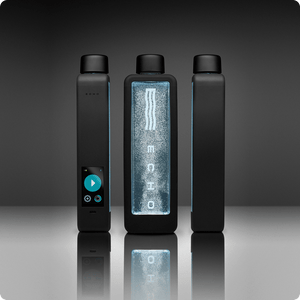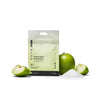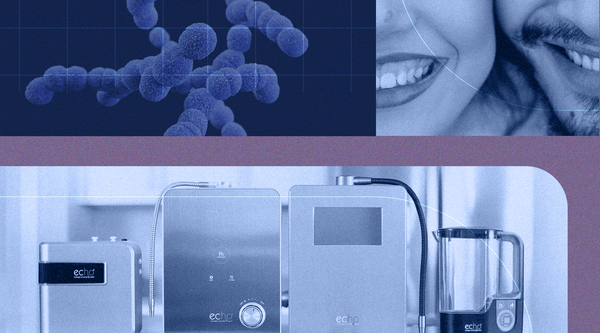Biohacking is an exciting fusion of biology and technology, aimed at optimizing health and maximizing performance. Through the understanding and manipulation of our biological systems, unprecedented control over physical and mental well-being can be achieved. For many, biohacking represents a desire to be better than just okay—to have full control over one’s own biology and to push the limits of human potential.
The concept of biohacking is rooted in the belief that we can change both our external and internal environments to improve our health, performance, and overall well-being. Over the decades, this idea has evolved by drawing inspiration from both ancient wellness practices and modern scientific discoveries. It has transformed and adapted to incorporate the wisdom of the past and the knowledge of the present. Today, biohackers use a variety of tools and techniques, including:
- Simple dietary changes
- Advanced technological implants
- Exercise and physical activity
- Meditation and mindfulness practices
- Sleep optimization
- Supplementation with vitamins and minerals
- Cold exposure and heat therapy
- Light therapy
- Genetic testing and personalized medicine
The aging process heavily relies on technology, enabling biohackers to monitor various health aspects in real-time and fine-tune their lifestyles based on the data.
Biohacking is practiced by scientists, ex-scientists, and even non-scientists who adopt a scientific approach to track the efficacy of their health routines. It’s a broad spectrum that includes everything from nutritional adjustments to molecular and technological enhancements. It’s worth exploring in more detail the different types of biohacking and the guiding principles behind this intriguing practice.
The History of Biohacking
Biohacking has its roots in the DIY biology movement, which promoted the idea of carrying out biological experiments away from conventional lab environments. This bottom-up approach began to flourish significantly with the advent of the quantified self-movement in the early 2000s, focusing on tracking personal metrics and analyzing individual data.
These collective efforts have been instrumental in shaping contemporary biohacking. They combine the inventive spirit and inquiry-driven nature typical of an amateur scientist with advanced technological tools, paving the way for today’s exploration into biohacking.
Key Principles of Biohacking

Biohacking is built upon three fundamental principles:
- Self-experimentation: This entails trying out different health strategies on oneself to monitor the impacts.
- Personalization: It customizes these approaches according to a person’s specific biological makeup and way of life, aiming for optimal results.
- Open science: This advocates for the free exchange of information and findings among those involved in biohacking.
Biohacking espouses an ethos that supports open science by democratizing scientific research and experimental practices for all individuals.
Nutritional Biohacking
Nutritional biohacking harnesses dietary strategies to enhance cellular metabolism and boost energy generation, leading to improved health. Two of the main tactics in this field include the ketogenic diet (or similar low-carb diet) and intermittent fasting. The ketogenic diet focuses on a high-fat, low-carbohydrate consumption pattern that stimulates fat burning for elevated energy levels. Intermittent fasting alternates between eating phases and fasting periods, which promotes metabolic health while fostering processes critical for cellular repair.
Within the realm of nutritional biohacking aimed at refining body composition, certain foods play pivotal roles. Foods containing Coenzyme Q10 like organ meats and fatty fish are vital for maintaining mitochondrial function and optimizing energy production efficiency. Nutrigenomics investigates how our diets impact genetic expression. By understanding this connection, we can tailor nutrition choices to leverage one’s unique genetic makeup.
A concoction known as Bulletproof Coffee has gained traction among biohackers due to its combination of organic coffee with MCT oil and butter—ingredients believed to improve satiety while bolstering heart health.
Molecular Biohacking
Molecular biohacking utilizes both natural and man-made molecules, including vitamins, minerals, and peptides, to manipulate various biological functions. Key elements of this practice include nootropics—commonly called “smart drugs”—which are substances formulated to enhance cognitive abilities such as:
- wakefulness
- emotional state
- recollection
- inventive thought
- determination
Over-the-counter nootropics consist of supplements, beverages, and foods like creatine and caffeine that are geared towards augmenting mental performance.
Crucial in the realm of molecular biohacking are peptides. These short amino acid sequences play roles in cell repairment, microbial destruction, and hormone activation. Herbal adaptogen supplements may also bolster the body’s defense against stressors by affecting hormones responsible for managing stress impacts. Known for contributing to a state of calmness through modulating neurotransmitters linked with relaxation is L-theanine supplementation.
Technological Biohacking
Technological biohacking uses wearable devices and embedded implants as tools to collect data and augment human abilities. Smartwatches and fitness bands are commonly used to track physical activity, heart rate, sleep patterns, and other health metrics. These devices provide real-time data that can be used to set fitness goals and monitor progress, making it easier to optimize health and performance.
More advanced technological biohacks involve embedded implants and body modifications. One example of the grinder movement is when individuals implant devices such as microchips and magnets into their bodies in order to enhance human capabilities or senses. This can include improving their strength, vision, or other biological functions. These implants can store passwords, act as electronic lock keys, and collect detailed biological data. While these innovations offer exciting possibilities, they also raise ethical and safety concerns that need to be addressed.

Beginner's Guide to Biohacking
Individuals who are new to biohacking can experience notable improvements in their wellbeing by adopting basic alterations in their lifestyle. Biohacking employs a holistic view of biological systems, recognizing that the things we consume and interact with, such as nourishment and auditory stimuli, have profound effects on our physiological output, including behavior and overall health. The Bulletproof Diet is one favored method which suggests incorporating:
- Vegetables paired with butter made from grass-fed cows
- Beef derived from grass-fed sources
- Eggs obtained from free-range poultry
- Fish with low levels of mercury
It’s essential for those pursuing biohacker dietary practices to avoid sugar intake and pinpoint any personal food intolerances. This aids in diminishing inflammation while also improving cognitive functions, thereby safeguarding against both metabolic issues and brain disorders.
Designing exercise regimens that resonate with individual fitness conditions along with personal inclinations bolsters continuity while minimizing harm risk. Recommended activities include:
- Allocating 10 minutes daily to foam rolling exercises which help restore mobility naturally whilst averting muscle stiffness.
- For individuals confined to prolonged periods of sitting, it’s advantageous to sustain a neutral-spine posture either by sitting cross-legged or squatting within your seat.
-Including instrumental music during tasks can modify brainwave patterns thus enhancing concentration abilities.
Four Immediate Hacks to your Health
Individuals keen on beginning biohacking can take the right steps towards enhanced health and well-being by adopting four straightforward but potent hacks: consuming hydrogen-infused water, engaging in breathwork exercises, integrating foods that bolster mitochondrial function into their meals, and eliminating unnecessary and toxin-heavy foods.
Hydrogen Water
Hydrogen water contains antioxidant characteristics, which play a role in diminishing inflammation and bolstering overall wellness. Through the neutralization of harmful free radicals, it can promote cellular health and strengthen the body’s inherent recovery mechanisms.
Adding hydrogen water to your everyday regimen is an effortless method to begin the enhancement of your health.
Breathwork
Exercises involving breath control are highly effective at regulating the nervous system, which can lead to increased mental clarity and a more relaxed state. Deep breathing methods, including box breathing and alternate nostril breathing, have been shown to lower stress levels and improve general well-being.
Consistent engagement in breathwork can empower you with improved management of your emotional and mental states.
Incorporating Mitochondria Supporting Foods
Adding foods to your diet that bolster mitochondrial function can improve cellular energy metabolism and general well-being. The following items are examples of such mitochondria-friendly foods:
- Olive oil
- Red wine
- Berries
- Leafy greens
- Nuts and seeds
- Fatty fish
- Avocado
- Dark chocolate
Consuming a diet filled with antioxidants, essential vitamins, minerals, and beneficial fats is conducive to promoting both cellular repair processes and the production of energy.
Incorporating these nutritional choices into your daily food intake may elevate your energy levels as well as enhance metabolic health.
Carnivore Diet
Making simple dietary changes can start with eliminating unnecessary and toxin-heavy foods and replacing them with nutritious, low-carbohydrate, animal-based sources that significantly improve our metabolic markers, leading to better hormonal, cognitive, and cardiovascular function.
That is what you can achieve by going on a Carnivore Diet. This diet is the third level of the Primal Diet, which aims to simplify nutrition by focusing on the eating habits of our meat-eating ancestors to reach root-cause healing.
Most of our health problems in this day and age are caused by consuming the wrong foods, which bring about inflammation, insulin resistance, problems in the immune function, cancer, and heart and brain issues.
By avoiding carbohydrate-rich, plant-based foods that contain various toxins, the Carnivore Diet can address the root causes of a wide range of chronic diseases and health problems, from inflammatory diseases and diabetes to immune conditions and cancer.
Advanced Biohacking Techniques
To take your biohacking to the next level, you might want to explore sophisticated strategies like:
- Plunging into cold water
- Therapy using red light
- Cycling periods of eating with fasting (intermittent fasting)
- Therapeutic use of vibrations across the entire body (whole-body vibration therapy)
Adopting these techniques could significantly boost both your mental and physical athletic performance by promoting recovery, facilitating cellular repair, and improving general well-being.
Cold Plunges
Immersing oneself in cold water, known as cold plunges and a type of cold water therapy, is beneficial for boosting athletic recovery, reducing muscle soreness, and accelerating the body’s healing process. It can also raise metabolic rate, fortify immune system response, and improve the quality of sleep. Engaging in this practice regularly has been shown to elevate endorphin production, which naturally enhances mood and aids in alleviating stress.
Red Light Therapy
Photobiomodulation, often referred to as red light therapy, employs low-level wavelengths of red or near-infrared light to enhance healing and recovery processes. It supports improved cellular function and skin health by mitigating inflammation and oxidative stress.
This treatment has the ability to stimulate collagen synthesis, which is beneficial for wound healing and fostering cellular repair.
Intermittent Fasting
Intermittent fasting provides a range of health advantages, such as:
- Enhanced metabolic wellness
- Diminished inflammation levels
- Boosted processes for cellular repair.
By cycling through phases of consumption and abstention from food, one may encourage:
- The burning of fat stores
- Increased insulin sensitivity
- Effective weight management
Tailored to suit personal lifestyles and tastes, this dietary strategy is centered on the pursuit of weight reduction.
Whole Body Vibration Therapy
Standing on a vibrating platform, whole body vibration therapy stimulates muscle contractions to boost strength and flexibility. It enhances circulation, lessens muscle soreness, and promotes general well-being.
Incorporating this therapy regularly into one’s fitness regimen can also reinforce bone density and improve joint health, providing significant benefits for the user.
Measuring the Effectiveness of Biohacks

To optimize health and performance, it is critical to evaluate the success of biohacks. Tools such as wearable devices, blood tests, and self-experimentation are instrumental in monitoring and examining the effects of different strategies. By gathering data and meticulously reviewing the findings, biohackers can refine their methods to achieve better results.
Using Wearable Devices
Fitness bands and smartwatches are capable of monitoring various health indicators, including physical activity levels, sleep trends, and additional vital statistics. This real-time information is instrumental in enhancing fitness objectives as well as overall health optimization.
Athletes who engage in biohacking for their physical health can benefit greatly from tracking data such as heart rate variability, the quality of sleep they achieve, and cycles related to reproductive wellbeing. These insights allow them to make educated adjustments to their healthcare practices.
Blood Tests and Biomarkers
Analyzing blood samples is crucial to gauge the influence of biohacking actions on nutrient levels and biological functions. Biohackers employ these tests to ascertain the effects that various diets or supplements have on their well-being. Comprehensive blood work uncovers critical details about:
- vitamin content
- mineral concentration
- antioxidant presence
- cellular health
Such insights are pivotal in preempting diseases and bolstering heart health, enabling individuals to tackle potential health complications early on.
Are you hydrogen deficient? Take our quiz to find out.
[blog-quiz-section]
Self-Experimentation and Data Analysis
Self-experimentation forms the bedrock of biohacking, empowering individuals to customize their interventions for their distinct requirements. Commence by pinpointing precise goals related to health or performance and meticulously monitor pertinent data through diary, applications, and wearable technology.
Examine your compiled information to discern patterns and tendencies that can elucidate the success of your biohacking methods. Harness this intelligence to enhance and modify your strategies systematically for perpetual progress.
Ethical and Safety Considerations
The swift expansion of biohacking has raised red flags regarding the moral consequences associated with altering one’s genetic makeup, as well as the self-application of drugs that are yet to be regulated. These activities pose considerable health risks and highlight the critical need for supervision and regulatory control by scientific authorities to deter malpractices involving biological materials.
Ethical and safety concerns escalate when considering physical alterations such as embedding electronic devices or magnets into the human body. These types of modifications intensify scrutiny over biohacking practices.
Potential Health Risks
Biohacking comes with potential health risks, which include:
- Engaging in the use of substances and procedures that are not regulated, potentially leading to harmful consequences
- The inconsistency and absence of regulation among nootropics can result in significant disparities regarding product excellence and the cleanliness of ingredients
- These unregulated products carry dangers like sleeplessness, feelings of unease or nervousness, as well as dependency
Employing experimental methods such as sourcing research peptides from questionable suppliers may provoke grave adverse effects and physical harm. Conducting comprehensive investigations and placing a strong emphasis on safety assessments is essential for reducing these hazards.
Consulting Medical Professionals
Consulting with healthcare experts is crucial when considering biohacking strategies, in order to prevent any adverse interactions with current health treatments or conditions. By talking about possible supplements and other interventions with your physician, you can emphasize safety and circumvent potential risks.
For well-informed choices regarding biohacking endeavors, the importance of professional medical advice cannot be overstated.
Regulation and Oversight
To protect the public from potential health risks and maintain ethical standards in biohacking, it is imperative to establish regulation and oversight. The FDA oversees a majority of biohacking products within the United States. Explicit guidelines tailored for biohacking are currently lacking.
In order to guarantee that biohacking products are consistently tested and adhere to safety protocols, state-level regulations should be instituted. Forming international coalitions could facilitate the creation of universal ethical norms and industry benchmarks in the field of biohacking.
Summary
In summary, biohacking offers a fascinating journey into optimizing health, performance, and well-being through personalized interventions and self-experimentation. From nutritional and molecular biohacking to advanced technological techniques, there are numerous ways to enhance your biology and achieve your health goals. While biohacking presents exciting possibilities, it’s essential to approach it with caution, prioritizing safety and ethical considerations. As you embark on your biohacking journey, remember to consult medical professionals and adhere to regulations to ensure safe and effective practices. Start small, track your progress, and continuously refine your techniques for optimal results. Embrace the potential of biohacking and unlock a new level of health and performance.
Frequently Asked Questions
What is biohacking?
Utilizing biology and technology, biohacking involves the enhancement of health, performance, and well-being through tailor-made measures and self-experimentation.
How can beginners start with biohacking?
Individuals new to biohacking can initiate their journey by adopting basic changes in lifestyle, including altering their diet to include foods that support mitochondrial health such as olive oil and red wine. Our Echo Go+ customers are already ahead of the curve! By making these modifications, newcomers to biohacking can gradually become accustomed to it and start reaping its advantages.
What are some advanced biohacking techniques?
Advanced biohacking strategies such as taking cold plunges, utilizing red light therapy, engaging in intermittent fasting, and employing whole-body vibration therapy are known to enhance bodily functions. Utilizing these methodologies can lead to the optimization of physical capabilities and an improvement in general well-being.
How can I measure the effectiveness of my biohacking efforts?
To gauge the success of your biohacking initiatives, use wearable technology, perform blood tests, and engage in self-experimentation. These methods allow you to monitor and assess your health indicators and results systematically.
Are there any ethical or safety concerns with biohacking?
Yes, extreme biohacking can pose health risks and ethical concerns, especially when involving unregulated substances and experimental procedures, so it’s important to carefully consider your overall wellness when trying new biohacks.







